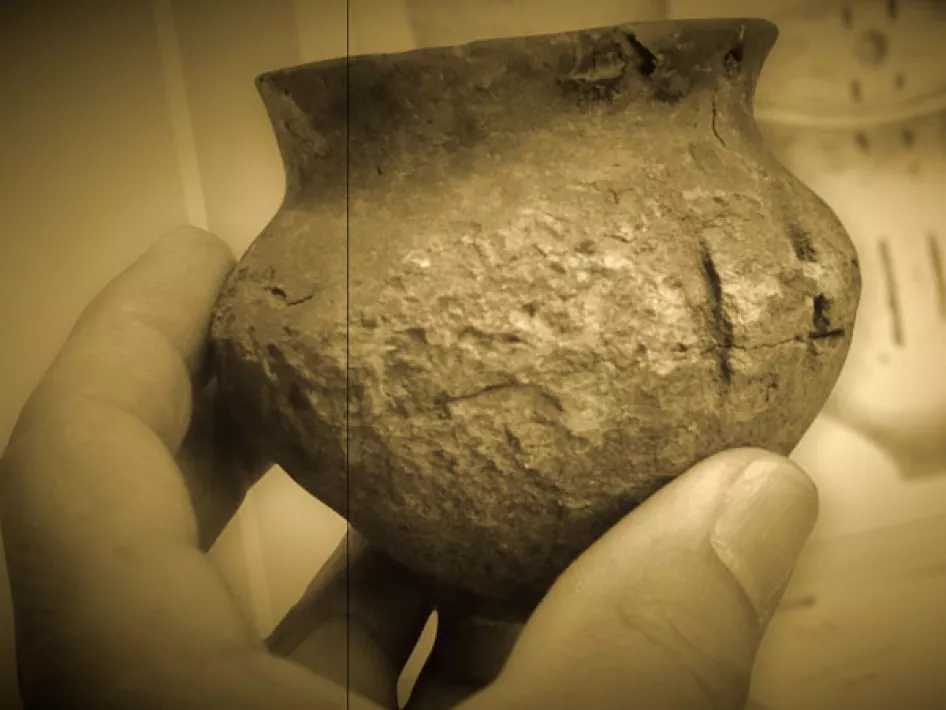We’re going to a location that is exclusively for the dead, far away from where the living resided and where their fields were. The Boshoverheide urnfield is the vastest urnfield in North-Western Europe. The burial field spans at least 33 hectares. Only a small part of this vast burial mound landscape has been investigated. It dates back to the Late Bronze Age – Early Iron Age, between 1050 and 500 B.C. This means that the burial field was used for a maximum of 550 years. Over 3,100 burials took place here, mainly by small rural communities.
The visible mounds made of sods with their round and oblong shapes like those of burial mounds or long-bed barrows mark the landscape. In total, 312 circular burial mounds and 36 long-bed barrows have been registered on the Boshoverheide. The length of the long-bed barrows varies from 4.5 up to 42 metres. The hills on the Boshoverheide aren’t particularly high. Two thirds of all the untouched burial mounds and those that have been restored are no higher than half a meter. The diameter of the mounds varies from about 4 to 8 metres. The largest mound, with a diameter of 17 metres, is the highest example standing at 1.2 metres tall. The mounds consist of sods that have been stacked on top of one another.
Urnfields are generally known for their lack of grave goods. However, on the Boshoverheide this isn’t the case. Among the grave goods, we find pottery, metal ware, animal bone material, stone and glass. The abundance and the quantity and quality of bronze objects is well-known far beyond the national borders. Jewels and objects related to clothing (bracelets, arm rings, fibula, needles, rings, buttons, medallions), weapons (swords, parts of shoes, spearheads), horse tack (ornaments and decorative elements) and tools are all examples.
It’s possible that certain deceased were brought to the Boshoverheide from miles away, as it also served as a way of reinforcing social ties at a supralocal level. Of the 404 known funerary monuments, over 150 have been restored. This has resulted in a highly visible prehistoric burial mound landscape which has been a protected site since 1968.
Download the app
NOTE: You can park in the parking lot of Boshoverheide on Trancheeweg 13. Then walk to the location, about 250 meters on the route there.
TIP: This location is part of the Weert archaeological experience route.
Visit other Archeo route Limburg locations
Archaeological site Weert - Urnfields
Archeologische vindplaats Weert - Urnenveld Boshoverheide
Trancheeweg 13
6002 ST
WEERT
Experience the archaeological story from the Urnfields. Download the app and get face-to-face on site with our archaeologist. He tells you the history and the importance of the Urnfields through most modern virtual technology. This makes you feel as if you transform into the past.
